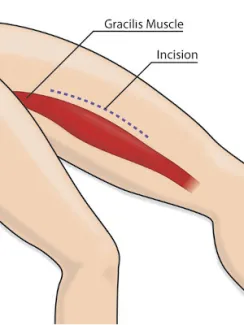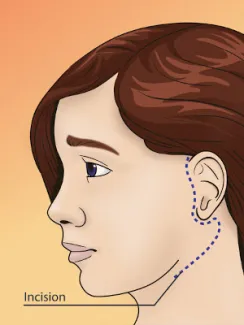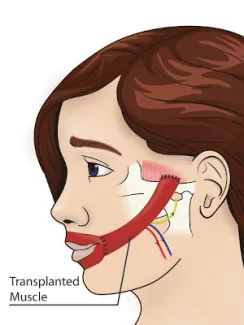Innovative treatment
In newborn infants, protection of the eye is of utmost importance. Keeping the eye well-lubricated is usually sufficient to protect it. When this fails, the eyelids can be partially closed in an operation called tarsorrhaphy.
For restoration of smile and oral competence, two main methods are available: static slings and functional muscle transfers.
- Static slings use the patient's own tissues to improve symmetry and function around the mouth and the eye.
- Dynamic muscle transfers can be done with local or distant muscles to help the patient smile and restore lip position.
- In suitable candidates, the ideal way to restore smile is using a distant muscle transfer through microsurgical techniques. See the illustration of a distant muscle transfer below.






